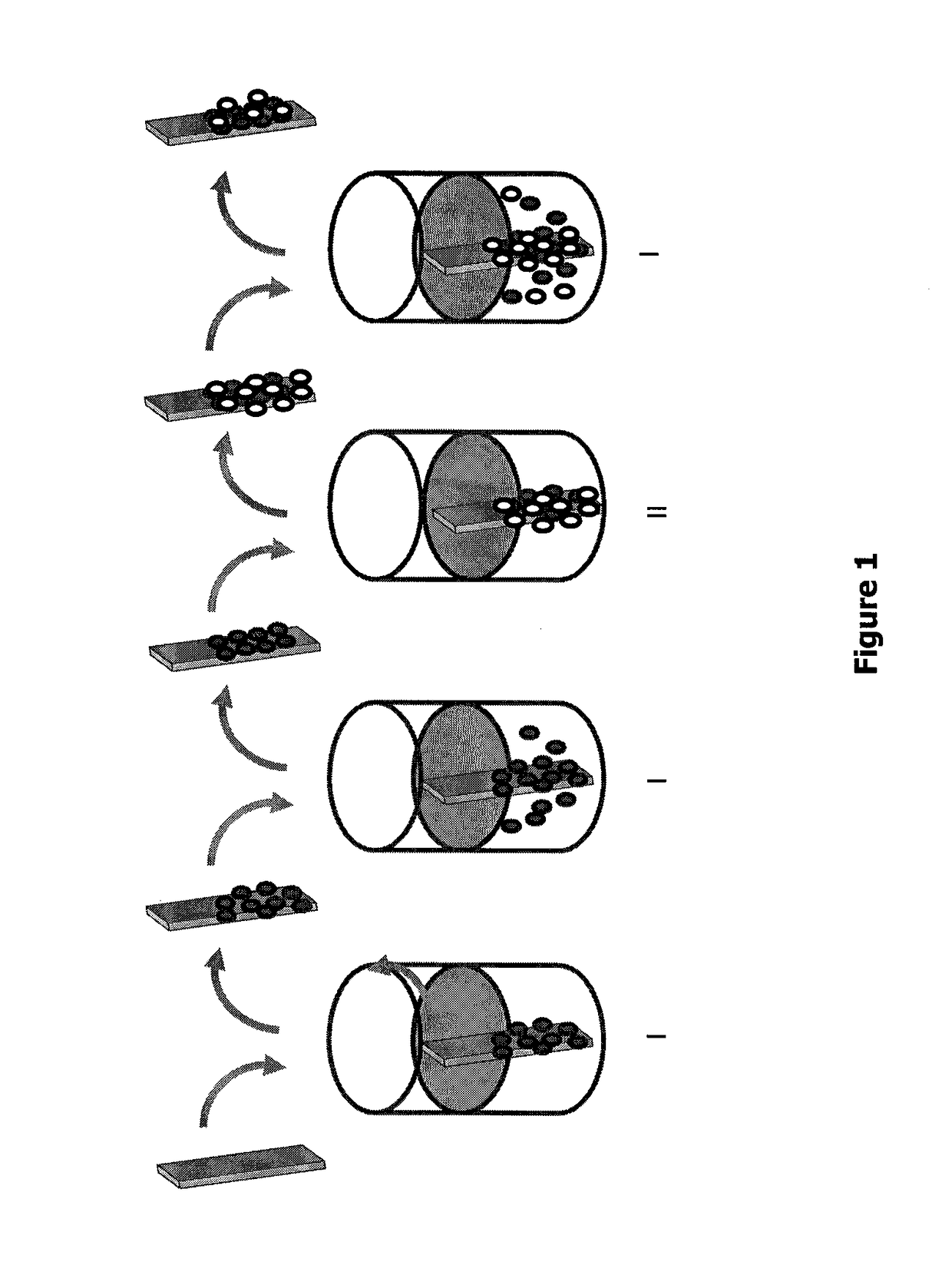Process for preparing quantum dot array and quantum dot superlattice
- Summary
- Abstract
- Description
- Claims
- Application Information
AI Technical Summary
Benefits of technology
Problems solved by technology
Method used
Image
Examples
Embodiment Construction
[0017]The Successive Ionic Layer Adsorption and Reaction (SILAR) method is based on triggering successive reactions in solutions such as aqueous (or ethanolic or any other suitable solutions of) saturated ionic solutions with a solid interface, as is illustrated by the dipping of a planar substrate in FIG. 1. Cation and anion dissolved precursors in the solutions will react with the substrate to yield the desired product. FIG. 1 is a schematic diagram showing the growth of an AB compound by a SILAR method. One SILAR cycle refers to (a) A+ ion solution dipping; (b) rinsing-removal of A+ ions in excess; (c) B− ion solution dipping; (d) rinsing-removal of B− ions in excess.
[0018]The nucleation of a QD layer by SILAR follows a protocol analogous to that used for the growth of a thin film (differing only in the amount of material deposited). Control of deposition on the substrate surface to achieve only very small particles (quantum dots) can be achieved by controlling deposition rate (a...
PUM
 Login to View More
Login to View More Abstract
Description
Claims
Application Information
 Login to View More
Login to View More - R&D
- Intellectual Property
- Life Sciences
- Materials
- Tech Scout
- Unparalleled Data Quality
- Higher Quality Content
- 60% Fewer Hallucinations
Browse by: Latest US Patents, China's latest patents, Technical Efficacy Thesaurus, Application Domain, Technology Topic, Popular Technical Reports.
© 2025 PatSnap. All rights reserved.Legal|Privacy policy|Modern Slavery Act Transparency Statement|Sitemap|About US| Contact US: help@patsnap.com



